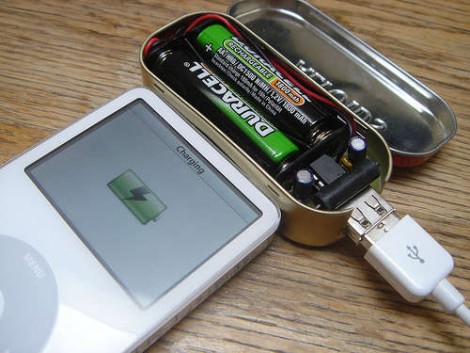
Limor a.k.a. Ladyada has been a long standing staple in the Hack-A-Day community and we were more than happy to hear about her latest project. The Minty Boost is an improvement on the idea of building a battery powered USB charger. Most designs (including ours) use a 7805 linear regulator with a 9V battery. Even in the best case the regulator is only about 60% efficient which means you’re losing at least 1/3 of the power to heat. Limor’s design is a much more efficient boost converter design and uses far more common (and rechargeable) AA batteries. She’s got a thorough write up on how to build the converter in an Altoids gum tin. The end result is 82% efficient and can effectively double the play time of a video iPod.
The guide doesn’t end there. Limor actually wrote this as a demonstration on what goes into a making a kittable project. She covers the entire process from component selection, to mass PCB production, to what her final cost break down is. The guide is full of pictures thanks to some good planning as well. Of course the most interesting thing we learned from the guide is this: despite using the tins all the time, Limor finds the taste of Altoids gum disgusting.
[The guide is on her site, but we’re linking to the version on Instructables since we’ve managed to DDOS her site in the past… by announcing that her site was back online.]

















